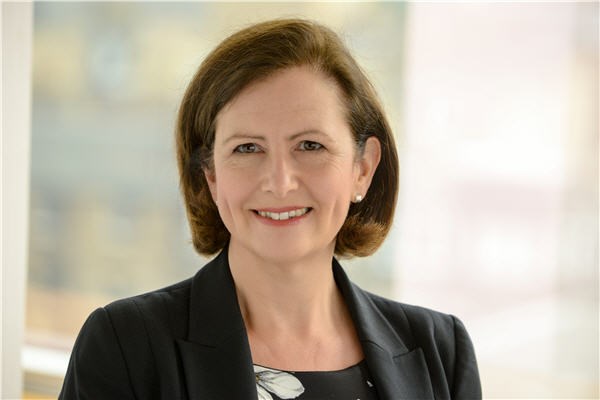Where are we now?
In summer 2018, a policy statement and final rules are expected from the latest extension to the senior managers and certification regime (SM&CR). In July 2017, the FCA published a consultation paper (CP17/25) proposing changes to extend the SM&CR to FCA solo-regulated firms. Later, in December 2017, the FCA separately consulted (CP17/40) on the operational aspects of the new regime.
The new regulatory framework will largely replace the Approved Persons Regime. Banks, insurers and some large investment firms have been subject to SM&CR since March 2016. The extended regime is applicable to remaining insurance firms from 10 December 2018. Although there is no set date for implementation to other firms still outside the regime, we expect the new rules to apply from mid-to-late 2019.
Gauge your SM&CR readiness:
- Do you understand your personal responsibilities under SM&CR?
- Do you understand what "reasonable steps" are in connection with your duty of responsibility?
- Could you rate your colleagues as fit, proper and competent to discharge their allocated duties?
- Are your job descriptions up-to-date, ready to map onto statements of responsibilities; a management responsibility map; and handover notes?
Read on for 10 things you need to know, and 10 things you need to do for SM&CR within the next 6-12 months.
10 things you need to know
1. The new regime is built on three key planks: the Senior Managers Regime, the Certification Regime and Conduct Rules. There are different requirements for different types of FCA solo-regulated firms. Most firms will be "core firms", which are subject to a baseline of SM&CR requirements. There will also be a reduced set of requirements for a group of smaller firms, known as "limited scope" firms. This category includes firms that currently only need FCA approval for certain controlled functions. The FCA proposes to apply additional requirements to firms whose "size, complexity and potential impact on consumers warrant more attention", known as "enhanced firms".
2. Senior Managers Regime: This directly replaces the previous Approved Persons Regime. It is based around senior management functions (SMFs) and each SMF comes with a prescribed responsibility. SMFs must be allocated to senior managers (and set out in a statement of responsibility). These individuals must be approved by the FCA before carrying out the relevant SMF(s). Enhanced firms must go further and allocate “overall responsibility” for every business unit, activity or area of the firm to one or more senior managers (with no gaps). This involves mapping out all the different business units, activities and areas of the firm, including both front office and back office functions.
3. Certification Regime: Employees which could cause significant harm to the firm, the market or customers (but are not senior managers) must be annually certified by the firm as fit and proper to carry out that role.
4. Conduct Rules: These FCA rules are intended to replace all previous statements of principle and the code of practice made under the Approved Persons Regime. They will apply to all individuals within the firm (including senior managers and certified staff) except for prescribed employees involved in the provision of ancillary services only (such as secretaries, admin and kitchen staff).
5. A duty of responsibility will apply to all senior managers. Senior managers responsible for an area (as set out in their statement of responsibility) that breaches a regulatory obligation may be held personally accountable if they cannot show they have taken reasonable steps to stop any such breach.
6. Employees in overseas branches and subsidiaries can be in scope of elements of SM&CR. For example, employees can perform roles in the group context which require them to be approved as senior managers and there are specific SMFs which relate to heading up an EEA or third country branch. Overseas employees may also be in scope of the Certification Regime and/or subject to the Conduct Rules (but there are territorial limitations in place).
7. Firms are required to provide a regulatory reference (which is a prescribed regulatory form) for senior managers and certified staff. This confirms to the employee’s next employer whether there were any breaches of the Conduct Rules or fit and proper requirements that resulted in disciplinary action being taken by the firm.
8. In partnerships, under the current Approved Persons Regime usually all partners will be the CF4 controlled function. Under SM&CR, there will be a new "partner" senior management function (SMF27) but not all partners will necessarily be captured. The FCA suggests that where a firm has purely silent partners or, where the firm has a large number of partners at a junior level who have no involvement in managing the firm or authority to act on behalf of the firm, such partners will not be caught by SM&CR.
9. The FCA is introducing a new prescribed responsibility for authorised fund managers. This will require an individual, usually the chair of the board, to take reasonable steps to ensure that the firm complies with its obligation to carry out the assessment of value, the duty to recruit independent directors, and the duty to act in the best interests of fund investors.
10. In order to transition to SM&CR, the FCA proposes to automatically convert most of the approved persons at core and limited scope firms into the corresponding senior management functions. Enhanced firms will need to submit a conversion notification (Form K) with various accompanying documents.
10 things you need to do
1. Understand your business and the SM&CR. A full understanding of SM&CR is required in order to allow for a successful implementation. You need to understand how your firm will be categorised and the consequences of this for the rules which apply to it.
2. Plan your implementation project. Establish a working group and identify who will be responsible for leading implementation.
3. Raise awareness of the proposed SM&CR to internal stakeholders (including those overseas). From our experience in implementing the SM&CR in banks, an early communication campaign to all those affected helps at later stages of the implementation project.
4. Identify senior managers. You must identity the likely senior manager population (which the FCA expects will generally be grandfathered across). Consider whether there are any difficult issues which might need to be raised with the FCA at an early stage.
5. Allocate prescribed responsibilities. You must allocate prescribed responsibilities between senior managers and, if an enhanced firm, ensure that there is a senior manager covering each business function, activity and area.
6. Start the process for identifying certified staff and those subject to the Conduct Rules. You will need to identify those employees within the firm/branch/group that will be certified and/or subject to the Conduct Rules.
7. Engage with overseas stakeholders. If part of an international group, employees in other entities or overseas branches may be affected by SM&CR. You will need to consider whether any overseas employees need approval as senior managers or certification by the firm.
8. Develop and deliver training. Those who fall under the SM&CR should understand their responsibilities and risks. You will need to ensure that senior managers and certified staff are fully aware of the extent of their responsibilities and the detail of the risks involved. It is essential to equip them with knowledge of the new regime and what it means for them. All employees will need training on the Conduct Rules.
9. Review and update policies and procedures. You will need to review all current governance, procedures, policies and system in place in the business and question whether they could better support SM&CR and whether there are any gaps. The SM&CR touches all areas of a firm's business and changes may need to be made across a wide range of internal documentation.
10. Review and update job descriptions and employment contracts. From an employment law perspective, statements of responsibilities must be consistent with the senior manager's job description so these may need to be amended as part of the process of allocated SMFs. The HR practices at the firm will also need to be considered in light of SM&CR. For example, formal handover arrangements will need to be in put place for outgoing senior managers.




